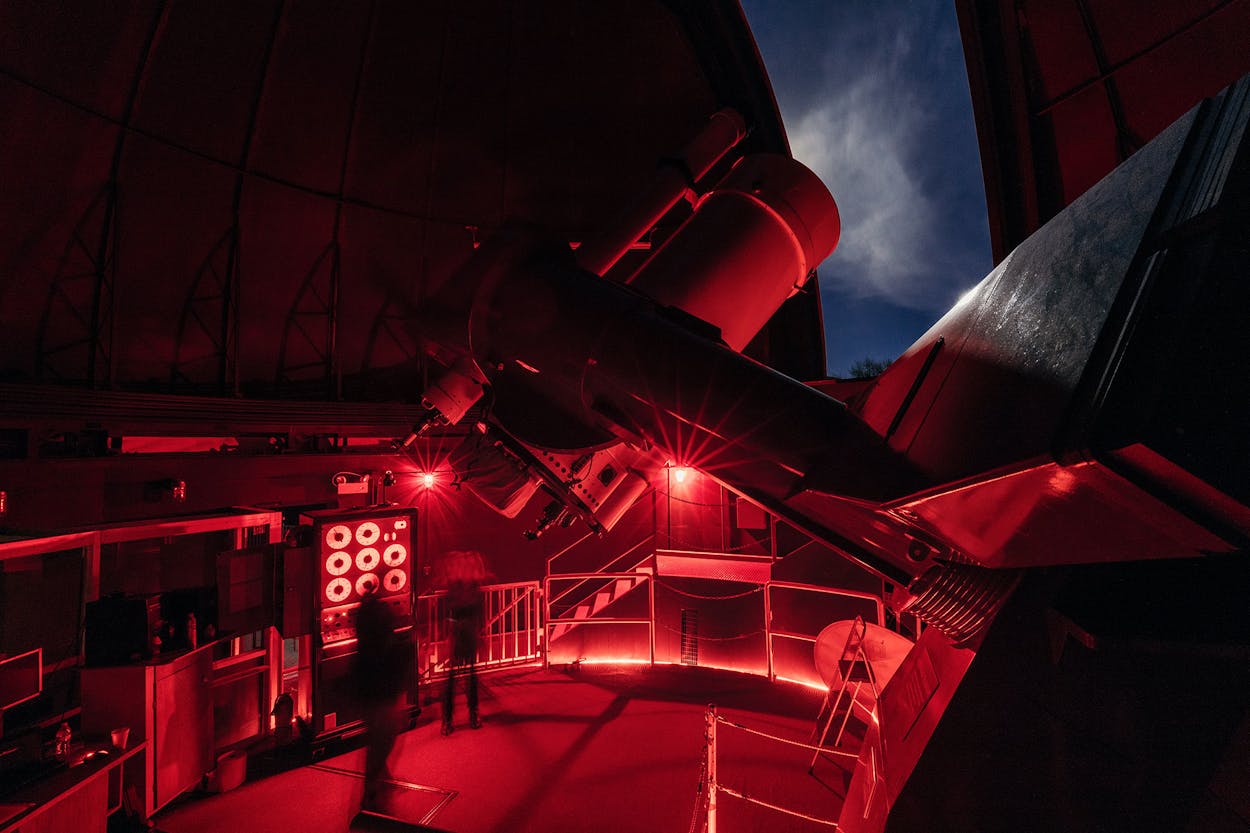With nearly 90 percent of the state’s population residing in metropolitan areas, Texas’s famous stars at night are hiding behind city lights. For those of us who long to trace the constellations, gaze upon the Milky Way, or catch a meteor trail, we’ll need to chart a path beyond the artificial glow of urban and suburban neighborhoods in search of darker skies—or more powerful telescopes.
Into the Dark
Satellite images of Texas at night show a state practically throbbing with light. But pockets of darkness remain, even in the state’s eastern half, where the majority of us make our homes. Look for less-traveled places like Caddo National Grasslands, west of Paris, near the Red River, where lakeside campgrounds offer unimpeded views of the stars. Enchanted Rock State Natural Area, in the Hill Country north of Fredericksburg, is so committed to its night views that park staff set up monitoring equipment to report the sky’s darkness online in real time.
City Stars
Southwest of Houston, at Brazos Bend State Park, peer through telescopes for a glimpse of the cosmos at the George Observatory, a satellite facility of the Houston Museum of Natural Science (it’s open on Saturdays). In the Dallas area, the University of North Texas operates two large domed observatories and twelve additional telescopes at the Rafes Urban Astronomy Center, which holds an open house the first Saturday of each month.
Open Skies
For serious stargazing in Texas, of course, there’s no substitute for a journey to the farthest-flung regions of the state, from Copper Breaks State Park, on the rolling plains west of Wichita Falls, to the deserts of Big Bend. No telescope required.









